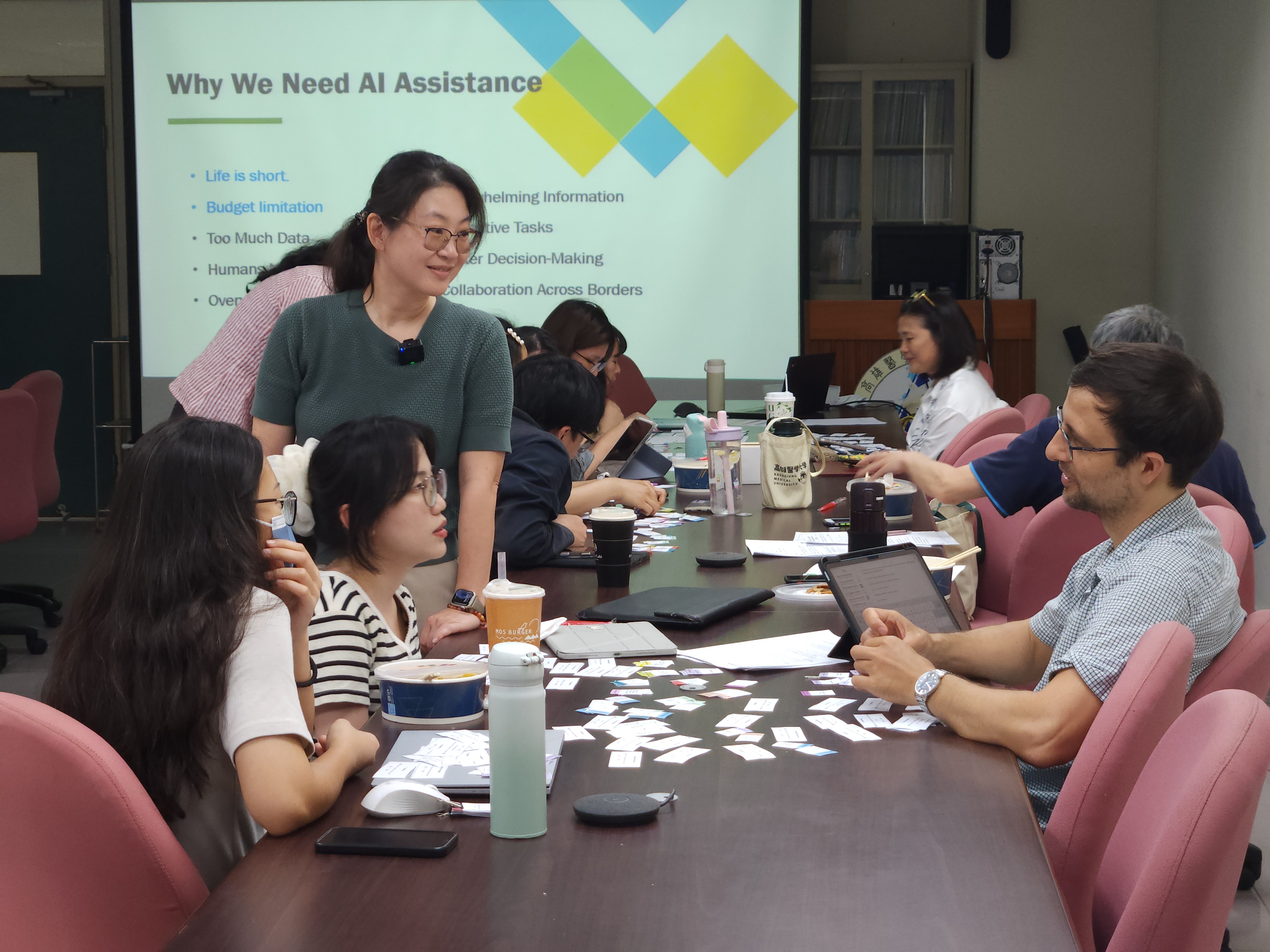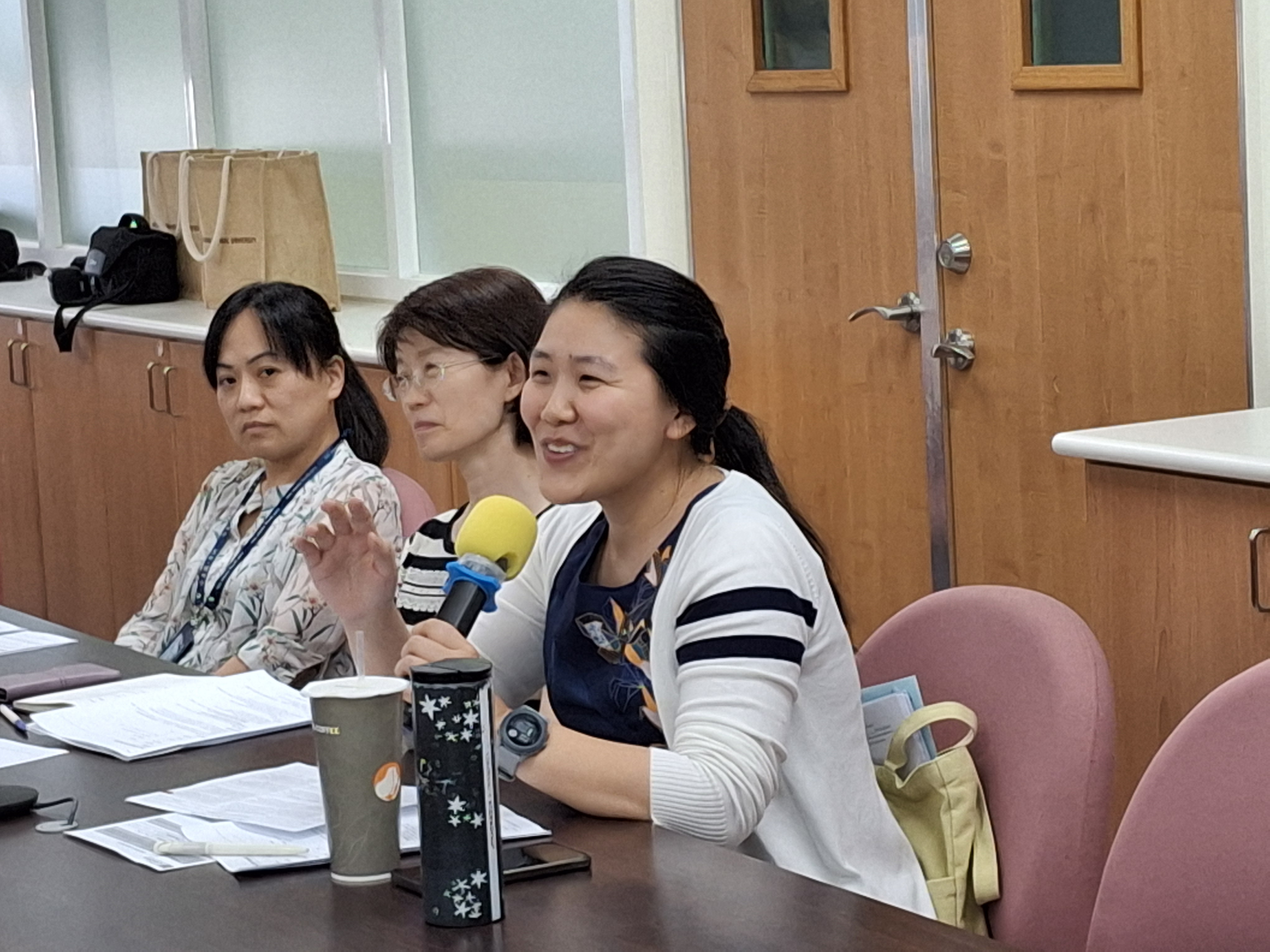Kaohsiung Medical University Bilingual Teaching Program
Achievement Report
for 113 Academic Year
Unit:Teaching and Learning Development and Resource Center
|
Name of activity |
The teaching observation activity of EMI Peer Observation of Teaching (POT) |
|
|
Date |
22 April, 2025 (Tuesday) |
|
|
Time |
11:30-14:00 |
|
|
Place |
N532, 5F, First Teaching Building |
|
|
Target |
Teachers who are interested in teaching observation |
|
|
Number of participants |
5 |
|
|
Activity focus and purpose : In order to continue developing the teaching observation activities of Peer Observation of Teaching (POT), a mechanism is administered for teachers to learn and advance by means of teaching peer observation, and POT is practiced to establish a process mechanism of teaching observation. The observers are provided with the opportunity of direct peer classroom observation wherein they, as learners, grasp the operation of along with merits and demerits of different teaching methods, and give themselves the chance of reflection on their own courses. The observed are, on the other hand, offered the objective information to realize their actual teaching situations and problems.
Activity features and implementation : Research Assistant Generative AI Course introduction: 1) What is generative AI? How does it help research? 2) Group discussion task: What functions do you expect AI to have? Why do you need it? 3) Providing vocabulary support through “Pick-a-Word” key vocabulary cards (B1–C1) 4) Introduction to AI tools: Gamma AI, Litmaps, Notion, Mapify 5) Academic integrity and citation teaching 6)The lecturer and the observer exchange feedback on the course status and observation experience. Course feature: This course is designed in accordance with the EMI teaching principles, including "Content and Language Integration", "Student-Centered Teaching", "Student-Centered Group Tasks", "Vocabulary Support System" and "Feedback Tasks". 1) Content and Language Integrated Learning: a. Teaching course content and language skills at the same time - allowing students to improve their language skills while learning professional knowledge. b. Designing activities to help students understand, express and discuss these contents in English. 2) Student-Centered Teaching 3) Student-centered group tasks: Sentence frames, (Question 1 & 2) 4) Vocabulary Scaffolding System: Keyword CARDs 5) Feedback Tasks: Fill in the course learning sheet and feedback in written form Use CEFR (B1-C1) Language Support Strategy 1) Combined with guided practice - using sentence frames (Play with CARDs) and key vocabulary cards (Keyword CARDs). 2) Discussion activities centered on users’ needs for AI to promote the simultaneous development of professional knowledge and language. Instructions to the observing teachers: By the end of the course, students would be able to: Explore and understand scientific writing and academic ethical principles, such as avoiding plagiarism, citation standards, and respect for intellectual property rights. Use generative artificial intelligence to improve academic ability: Learn how to effectively use generative artificial intelligence tools to assist in research, writing, and learning. Develop research skills: Develop skills in finding, analyzing, and integrating academic resources, and improve research design and execution capabilities. Improve academic reading and writing skills: Focus on understanding scientific writing strategies and writing scientific writing skills. Apply the knowledge and skills learned: Complete a well-structured academic article to demonstrate research results and writing skills. Satisfaction survey: 87% |
||
|
2. Activity Highlights |
||
|
|
|
|
|
Figure 1: Lecture |
Figure 2: POT |
|
|
|
|
|
|
Figure 3: Discussion |
Figure 4: Discussion |
|


